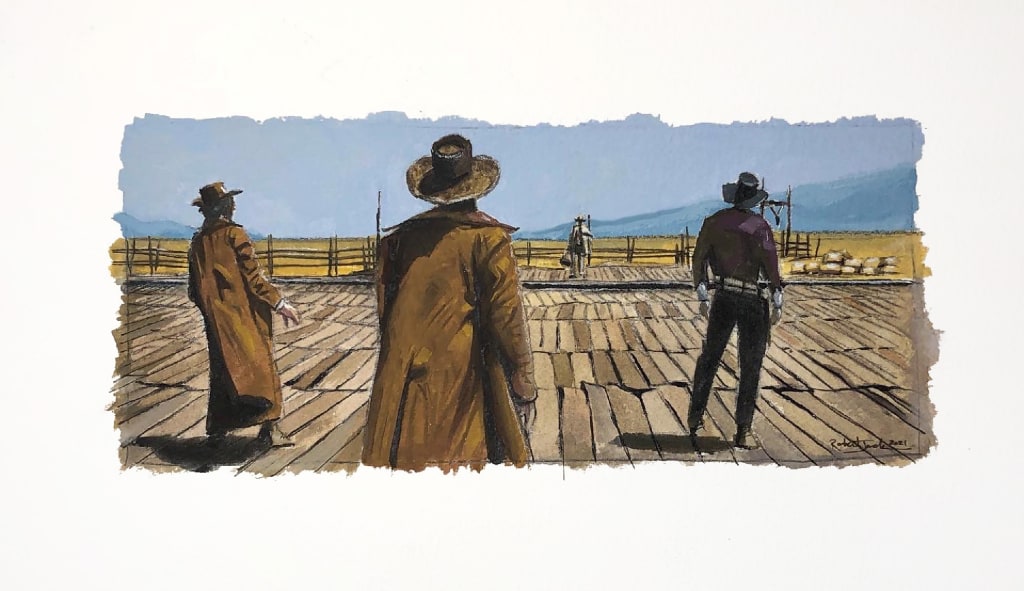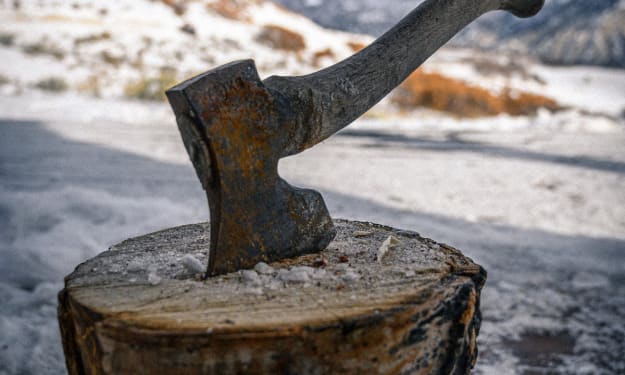Once Upon a Time in Spain
A true story of cinematic triumph and tragedy.

May, 1968. A cowboy struck the hot Spanish ground, not dead, but dying. Al Mulock had leapt from the rooftop, boots and all. It was a three-story drop.
Inside the hotel, a tired film crew was doing their level best to enjoy the sparse accommodations of a sweltering town called Guadix, Grenada. They had only just returned from a long day of filming on location far outside of town. When the figure of an Old West outlaw passed the window, screenwriter Mickey Knox and production manager Claudio Mancini exchanged a speechless glance. If what they had just witnessed was merely a heat-induced hallucination, it had been a shared one.
Even as Al writhed in the dust outside, word of the attempted suicide reached the ears of film director, Sergio Leone. Leone had not wrapped up shooting scenes with Al, and with the weight of production on his shoulders, pragmatism spoke. “Get the man’s costume before they take him away.” Leone was unaware that, by that point, Al Mulock was still alive.
In Al’s condition, he should not have been moved at all. Instead, his broken body was jostled as a frantic production crew removed his costume, lest it be gently cut to pieces by medical personnel. The crew loaded Al into a car and set off for a faraway hospital, bouncing along uneven roads under a punishing afternoon sun. Somewhere along the way, a splinter of shattered rib pierced Al’s lung and granted him the relief he had hoped to find by stepping off the hotel roof. He was 41 years old.
Filming resumed the next day, and a man of similar build wore the dead man’s clothes to convincing effect. Once Upon a Time in the West was released to American cinemas the following year, and while critical reception was, at first, lukewarm, history would bear it out as Sergio Leone’s quintessential masterpiece. From the surehanded photography of cinematographer Tonino Delli Colli to the sweeping score by Ennio Morricone, there are many reasons to place West on any top 100 list. And for all the iconic scenes that set the film apart, it is the opening confrontation between Charles Bronson’s character and a trio of hired guns that is etched into the memories of anyone who has viewed the film even once. Among those hired guns was Al Mulock.
The character is called "Knuckles." His wild hair and thousand-yard-stare help push the tension of the opening sequence to a boiling point. He earns his nickname as he idly cracks his knuckles, one joint at a time. From the shadows he watches. A train roars into the station. He flashes a measured grin toward the postal carrier tossing mail from a boxcar. Moments later, the train lurches on. The outlaws prepare to leave, their quarry an apparent no-show. Then they freeze. Somewhere close, a harmonica begins to play.
The gunmen turn to face the far side of the platform. Knuckles’ head tilts like a curious dog, listening to the haunting wail of the music. When the guns finally blaze, Knuckles is the first to hit the ground.
It is difficult to watch Knuckles without sensing the pain and desperation of the actor who would jump to his death later that very day. Leone’s penchant for extreme closeups offers viewers an uncomfortably close look into the eyes of a man on the brink of self-destruction. His exit from the film is as abrupt and violent as his exit from life.
Al Mulock was married with a child, although he had separated from his wife some time before her death to cervical cancer in 1967. If this loss was a factor in his own tragic passing a year later, we will never know. It was the opinion of eyewitness Mickey Knox that drugs – or, more specifically, a lack thereof – were the primary factor. The things that lead any human being to such extreme measures are often beyond the understanding of survivors. But watching Al Mulock’s final performance, the truth of Jason Robards’ line resonates: “People like that have something inside… something to do with death.”
About the Creator
Robert Jack
Robert Jack is a freelance artist and writer living in Michigan with his beautiful wife, children, and a variety of ill-advised pet choices. You can see his work at Apt22Art.com






Comments
There are no comments for this story
Be the first to respond and start the conversation.